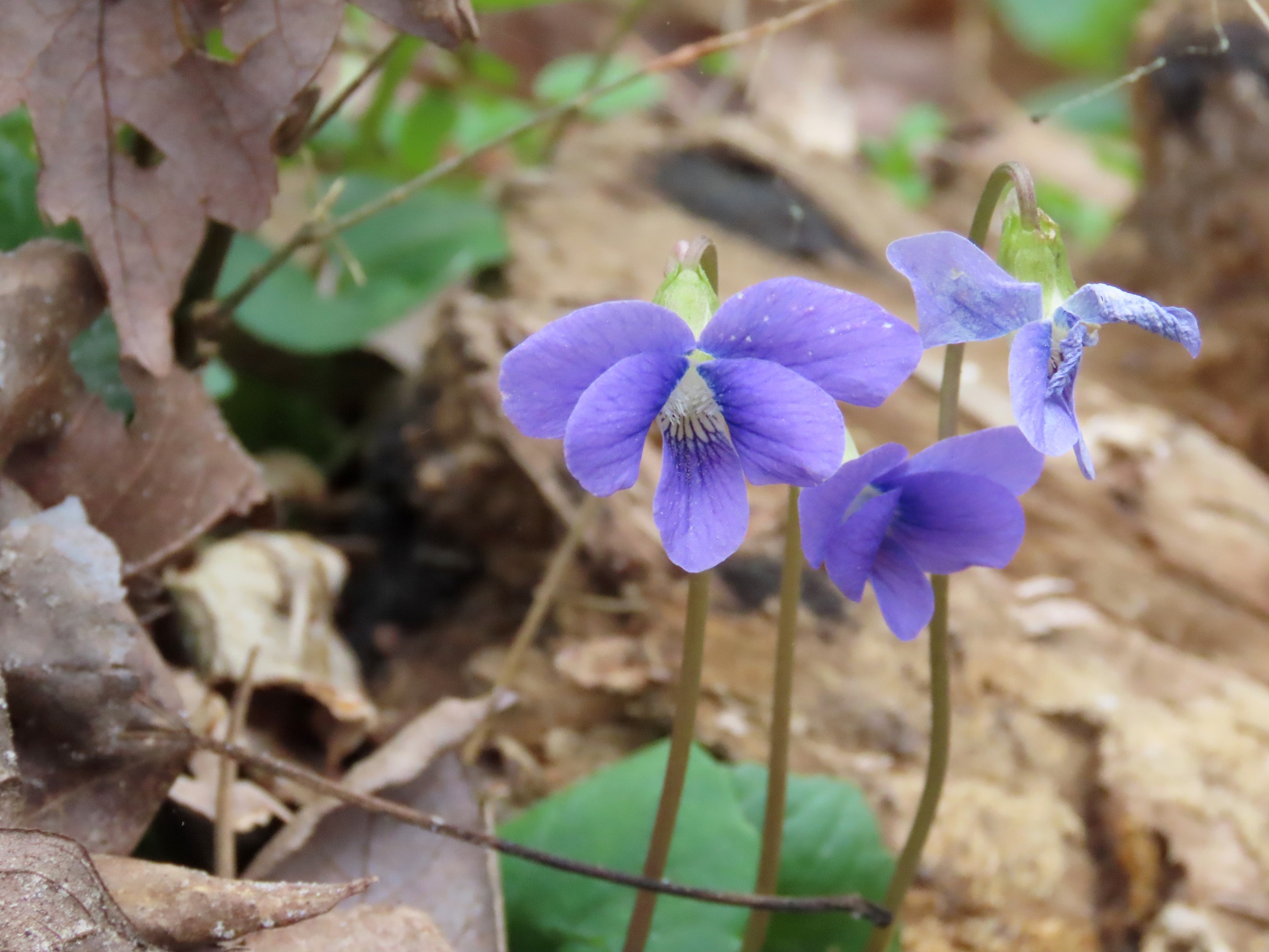
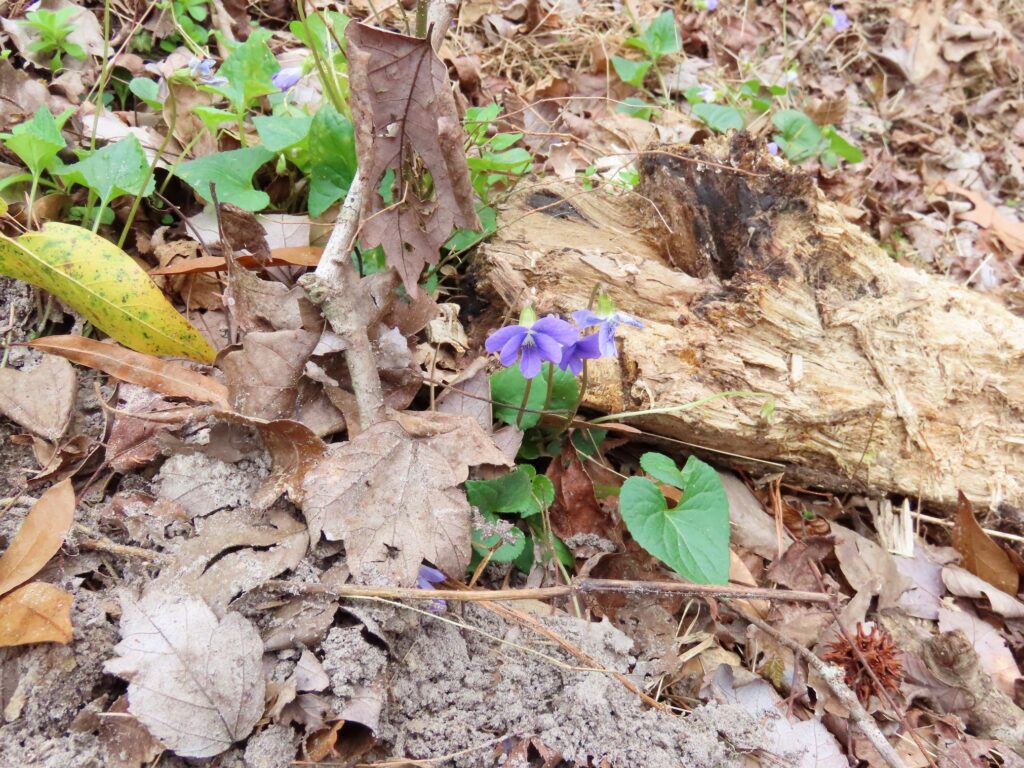
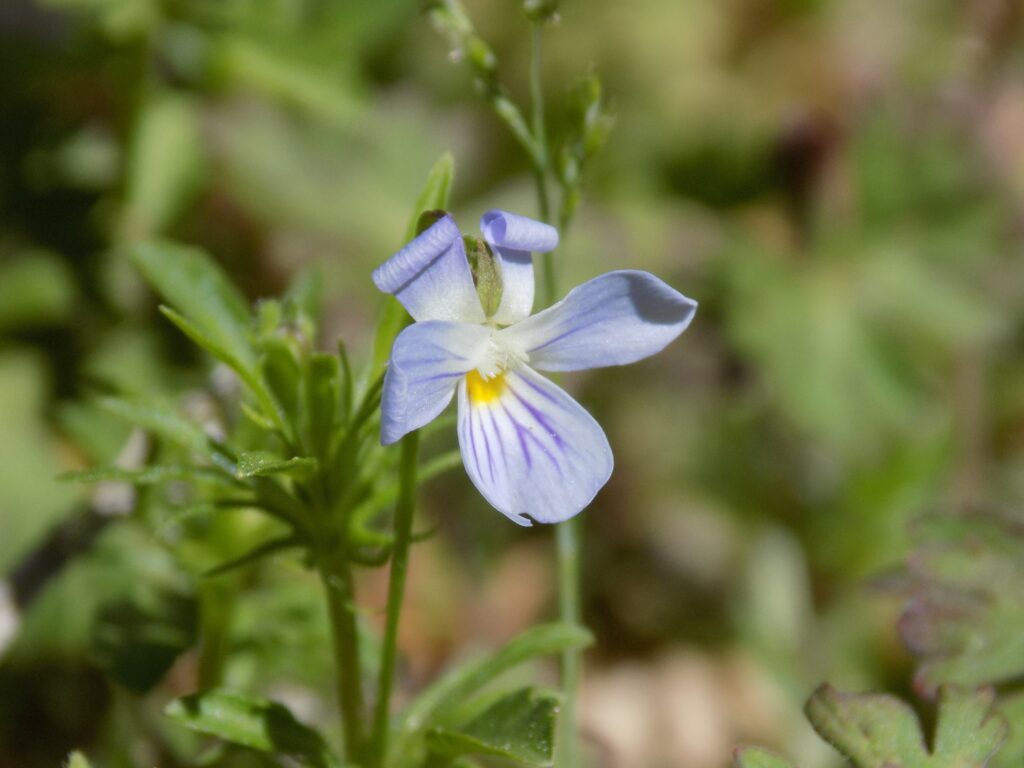
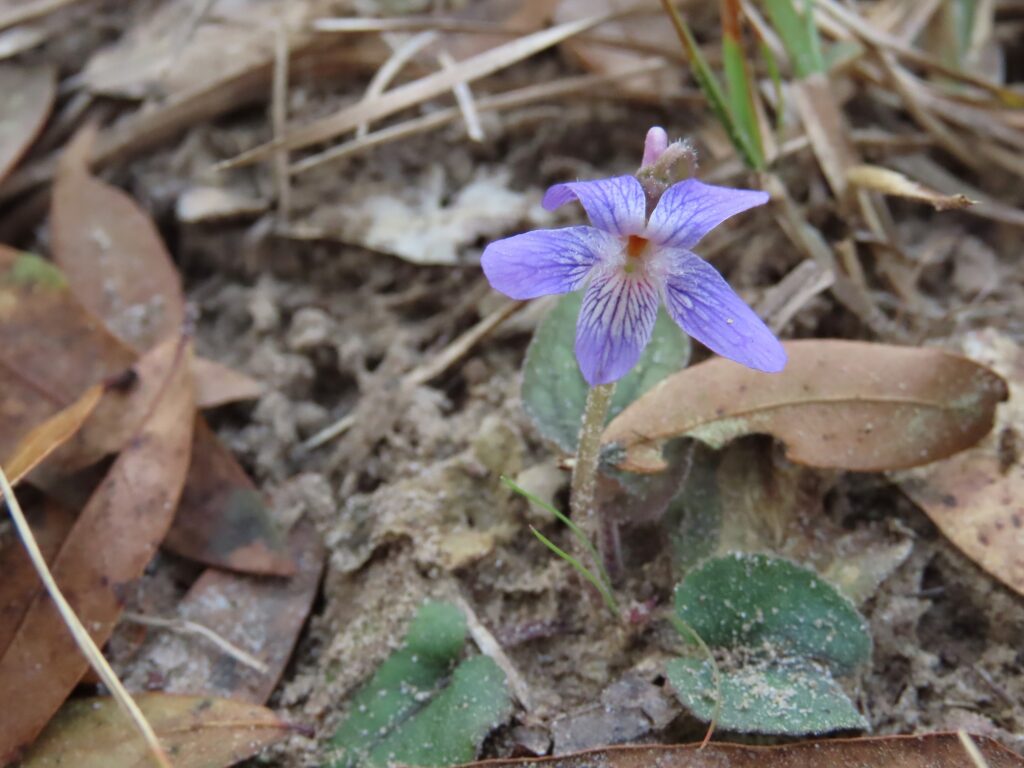
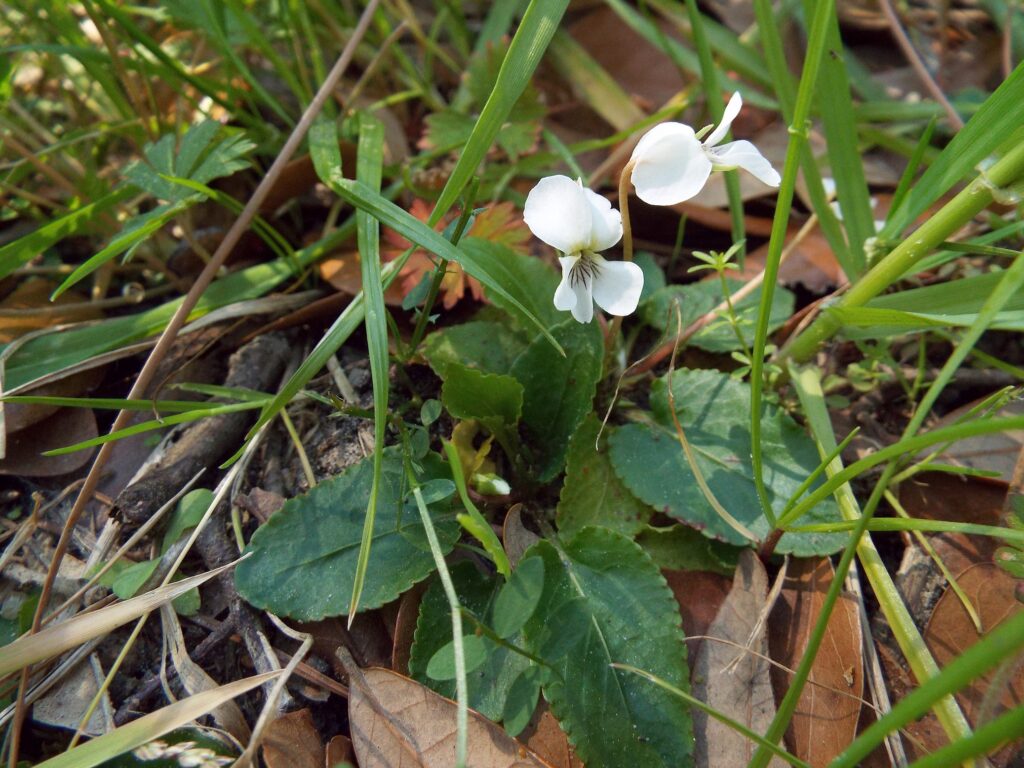
This week for Flora and Fauna Friday it’s one of our smallest, earliest, and most commonplace wildflowers, the Violets of genus Viola.
The Violets are a well-known genus of wildflowers. Ornamental varieties of several species have been used in gardens for centuries. We have many native species common to the Lowcountry that can be found blooming each spring across almost every habitat. Our native Violets as a whole are low-growing plants with relatively large, simple leaves. They have a small, bilaterally symmetrical flower held above the plant on a narrow stalk and petals colored either white, violet, magenta, or some combination of those three. Our Violets all bloom during March but some may start in February and others go through April. A whole Violet plant may only be four inches around and two inches high. They’re perennials commonly found in woodland clearings, forest edges, and lawns where there is partial or full shade, blooming early in spring and spending the rest of the year resting in the shade.
Here in the Lowcountry we have eight common species. I’m just going to cover the four most common and recognizable in brief detail. The Common Violet (V. sororia) is in fact our most common violet. It has round to triangular leaves with a scalloped margin and a half-inch violet colored flower with faint white and purple striation or sometimes white with purple veins emerging from the center. It’s common in both forests and lawns. The Field Pansy (V. bicolor) is a small violet found in fields, pastures, and lawns with narrow, clustered leaves and a small pale-violet flower petals around a golden center bordered by white. The Prostrate Blue Violet (V. walteri) is found in shady forest floors and north-facing forest edges in sandy habitats. It tolerates deep shade well, has round blue-green leaves with prominent veins, and will even spread laterally through its stems on moist soils. Its flower is pale-purple in color with prominent royal-purple veins and a white center. Primrose-leaved Violet (V. primulifolia) is found in moist forests, along wetland edges, and in other damp locales. It has a scalloped, spade-shaped leaf and a small snow-white flower with a lime-green center and maroon veins creeping out onto the lower petals. Additionally, Sand Violet (V. affinis), Lance-leaved Violet (V. lanceolata), Wood Violet (V. palmata), and Southern Coastal Violet (V. septemloba) are also widespread in the Lowcountry but either not as commonly found or as easily identified.